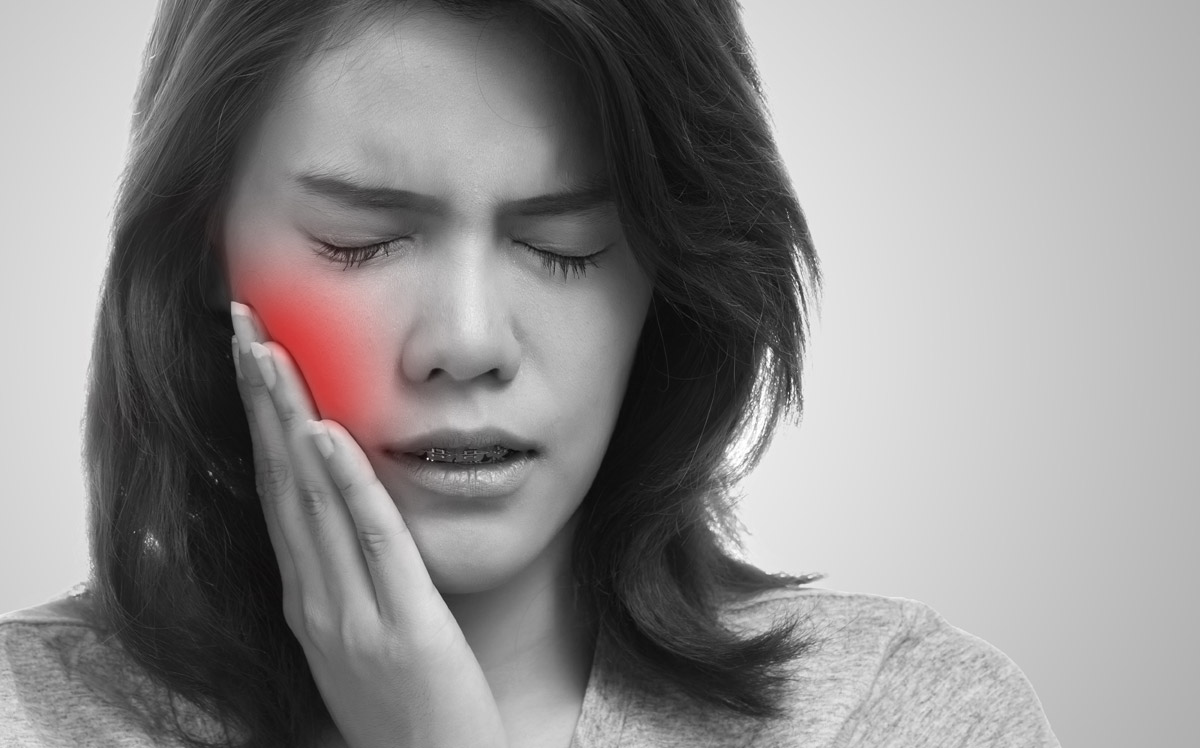Cracked Teeth - Symptoms, Types and Treatments of a Cracked or Broken Tooth
Cracked teeth can cause many problems including infection, discomfort and lack of ability to eat properly as well as impacting on our ability to relax and sleep due to pain.
Cracked teeth demonstrate many types of symptoms, including pain when chewing, temperature sensitivities, or even the release of biting pressure. It is also common for pain to come and go, making it difficult to diagnose the cause of discomfort.
Cracked teeth are usually caused by dental trauma, clenching or grinding. Left untreated, the crack in the tooth can extend causing severe pain particularly on biting, dental abscess, facial swelling and even tooth loss.
Chewing can cause movement of the cracked pieces of your tooth, and the pulp within the tooth becomes irritated. At the same time, when biting pressure is released, the crack can close quickly, resulting in sharp pain. Eventually, the pulp will become damaged and tooth will consistently hurt, even when you are not chewing. It is possible that cracks can lead to infection of the pulp tissue, which can spread to the bone and gum surrounding the problematic tooth.
Dr Yoganathan’s treatment will alleviate this pain and will assist in reducing any further cracking.
What is a Cracked Tooth?
A cracked tooth (or fractured tooth) refers to a tooth that has been chipped, cracked or broken, otherwise known as cracked tooth syndrome. It could be a very minor fracture or a visible break.
A tooth fracture or tooth crack can be caused by a number of things, and doesn’t just happen to older people.
Cracking or breaking a tooth can be quite painful, and will usually require a dentist to provide treatment - if you think you might’ve broken a tooth you should see a dentist straight away. There are a few different types of cracked teeth, so before your dentist can diagnose it you should focus on easing the pain and protecting your teeth from further injury.
Symptoms of Cracked Teeth
Cracked teeth do not always cause symptoms and sometimes do not require treatment. You should see a dentist immediately if you experience any of the following symptoms:
- Pain when chewing or biting
- Sensitivity to hot and cold foods
- Sensitivity to sweet foods
- Pain that comes and goes without explanation
- Swelling of the gums around the cracked tooth
Types of Cracked Teeth
Cracks in your teeth can vary in length, size and location. Some types of cracked teeth may not cause symptoms, while others can result in severe pain.
Vertical Root Fractures
A vertical root fracture begins at the root of the tooth and travels upward. It may not cause symptoms unless the tooth becomes infected, but if it is causing significant pain the tooth will often have to be removed.
Craze Lines
Craze lines are tiny cracks that are otherwise known as hairline cracks. They occur on tooth enamel and are commonly painless. They usually don’t require treatment and the person may not even notice that it’s there.
Fractured Cusp
This is most common around a dental filling and occurs on the crown of the tooth. These cracks usually do not affect the nerves or soft tissue on the inside of the tooth, and consequently are not very painful.
Split Tooth
This is a significant crack that separates the tooth into two pieces. If this happens, the natural tooth may not be able to be saved. The person might need to have root canal treatment, or one half might be able to be saved with a crown.
Cracked Tooth (Cracks That Extend Into the Gum Line)
This refers to a vertical crack that has reached or extended beyond the gum line. The tooth may need to be extracted, but it can be restored if treated quickly. These types of cracks can be very painful.
The Causes of Cracked Teeth
There are a few common causes for cracked teeth, including:
- Excessive teeth grinding
- Large fillings that weaken the tooth structure
- Biting hard foods or chewing ice
- Injury or trauma to the mouth from a fall, sports injury, car or bike accident or fistfight
- Sudden changes in temperature in the mouth, such as eating something very hot and then following it with ice or something very cold
- Age - many instances of cracked teeth occur in people aged 50 or older
Diagnosis of a Cracked Tooth
There are a few different methods that a dentist might use to diagnose a cracked tooth. They will start by asking you about your symptoms and whether you’ve experienced any recent trauma to the tooth. They will also ask about your dental history and your dental habits (such as teeth grinding or chewing on ice) because this can help them determine the type of crack.
Other methods that a dentist might use for a cracked tooth diagnosis include:
- Checking for an avulsed (completely dislodged) tooth
- Asking you to bite down on something to see if it causes pain
- Inspecting your teeth, possibly using a magnifying glass
- Inspecting your gums to check for inflammation, since vertical cracks may irritate the gums
- Shining a light through the tooth (transillumination)
- Putting a dental staining dye on the tooth to see the crack better
- Taking an X-ray to see any possible bone loss or poor pulp health
- Performing periodontal probing - using dental tools (otherwise known as dental explorers) to see if any get caught on the crack
What to Do if You Have a Cracked Tooth
Even if you have no obvious symptoms, you should see a dentist if you suspect a fractured tooth. For some types of cracks, early treatment could save the tooth. Infection can also occur if a cracked tooth is left untreated for too long.
You should see a dentist or healthcare provider immediately if you notice any of the following symptoms:
- Consistent bad breath
- Prolonged tooth pain
- Fever
- Inflammation of the gums
- Sensitivity to hot and cold foods
If you can’t get an appointment straightaway, you can attempt to soothe the tooth at home by doing the following:
- Placing an icepack on the outside of your mouth
- Rinsing your mouth with salt water
- Taking anti-inflammatory pain relief
Treatment and Repair of Cracked Teeth
The treatment for a cracked tooth will depend on the extent of the damage as well as the symptoms you are experiencing. There are a few different methods that a dentist might use to treat or repair a cracked tooth. In some cases, treatment may not be necessary.
Bonding
This involves using a dental resin to fill in the crack and restore the appearance and function of the tooth.
Crown
A porcelain or ceramic cap is fitted over the tooth. This process may take a few weeks because the crown needs to be made in a dental lab. Some enamel may need to be shaved off the tooth to make room for the crown before the dentist makes an impression and selects a colour that matches your teeth. The impression will then be sent to the dental lab.
Tooth Extraction
This is the complete removal of the tooth, used in cases of severe damage. This treatment might be necessary when the nerves and roots of the tooth are too damaged to repair.
Root Canal
A root canal involves opening up the tooth to remove damaged pulp inside it. This is used when the crack has extended into the pulp and is done to prevent further damage or infection. Regenerative endodontic procedures may be possible in some cases (repairing the injured pulp instead of removing it).
Prevention of Cracked Teeth
You can take some steps to make your teeth less susceptible to cracking or fracturing, although they are not completely avoidable:
- Don't chew on hard objects such as ice, unpopped popcorn kernels or pens.
- Don't clench or grind your teeth. If you do, talk to your dentist about getting a retainer or other mouthguard to protect your teeth.
- When playing contact sports, be sure to wear a mouthguard or protective mask.
- Practice good dental hygiene
- Schedule regular dental health check-ups
It’s not always possible to prevent fracturing a tooth, so even if you have perfect hygiene you should see a dentist if you begin to experience any of the symptoms.
Other Root Canal Therapy Procedures
Root Canal Therapy
Root canal therapy is a conservative procedure undertaken by an endodontist to save teeth. It is a commonly performed dental treatment and has documented success rates of over 90%.
Trauma Management
Injuries to the mouth may cause teeth to be pushed or dislodged from their sockets. We may need to reposition and stabilise your tooth.
Regenerative Endodontic Procedures
With regenerative endodontics, we revive or regenerate the tooth’s natural tissue so the root can continue growing, be functional and last you for your lifetime.
Internal Bleaching
Internal bleaching, also referred to as walking bleach, is a technique that is used to whiten the appearance of teeth. Internal bleaching is conducted under the direction of a dentist.
Apicoectomy Procedures
Root end sugery or apicoectomy is the most common surgery used to save damaged teeth. Occasionally, root canal therapy will not be sufficient to heal the tooth and your endodontist will recommend surgery.
Root Canal Retreatment
There are cases where a tooth that received root canal treatment may fail to heal or pain may continue to exist. The failure can occur months or years after the intial treatment.

